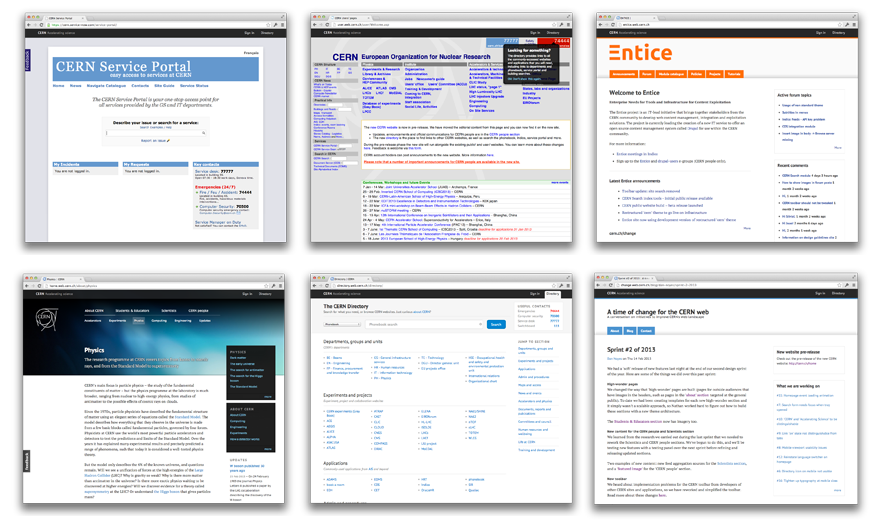Look up. Notice anything? The CERN toolbar, which graces the top of this and other websites at CERN, launched this week. The CERN toolbar provides a branding element to CERN sites, a link back to http://cern.ch, a "Sign in" link, and a link to the directory, where you can find search tools such as the CERN phonebook, maps and other applications as well as a list of websites at CERN. The toolbar will be the same across a broad range of websites at CERN, so you can always find your way home. The directory lists commonly used CERN websites.
"The CERN toolbar is the result of months of hard work and collaboration between the CERN communications group, the IT department and application developers at CERN," says Dan Noyes, who manages websites in the communications group. “It has taken a lot of design iterations and user testing to refine the CERN toolbar to be this simple and useful. I think it will be a key element of the CERN web experience in future – a touchstone that tells you ‘This is a CERN website’.”
"Implementing a similar experience across the range of web services that we support has required careful implementation and collaboration," says IT/OIS group leader Tim Bell, who manages the infrastructure and web services group in the IT department.
All new Drupal sites at CERN come with the CERN toolbar already installed and ready to go, and the web services team is working to implement the toolbar across other technology stacks such as Sharepoint and IIS-hosted websites.
The web services team has made improvements to the CERN Single Sign On (SSO). You will soon be able to sign in to certain applications directly from the toolbar using not only your CERN account, but federated accounts from other institutions, Facebook and third-party services.
"With the rapid evolution of the web, it is critical to ensure that user privacy and data protection are fully considered along with increased function. Moves such as strong authentication methods that require users to provide not only a password but also a second authentication method such as a smartcard will protect our critical assets," says Bell. "Easy authentication via services such as Facebook or Google authentication will enable participation in certain applications from the wider community."
CERN developers who want to use the toolbar can find documentation, standards and code in the CERN User Experience guidelines.

